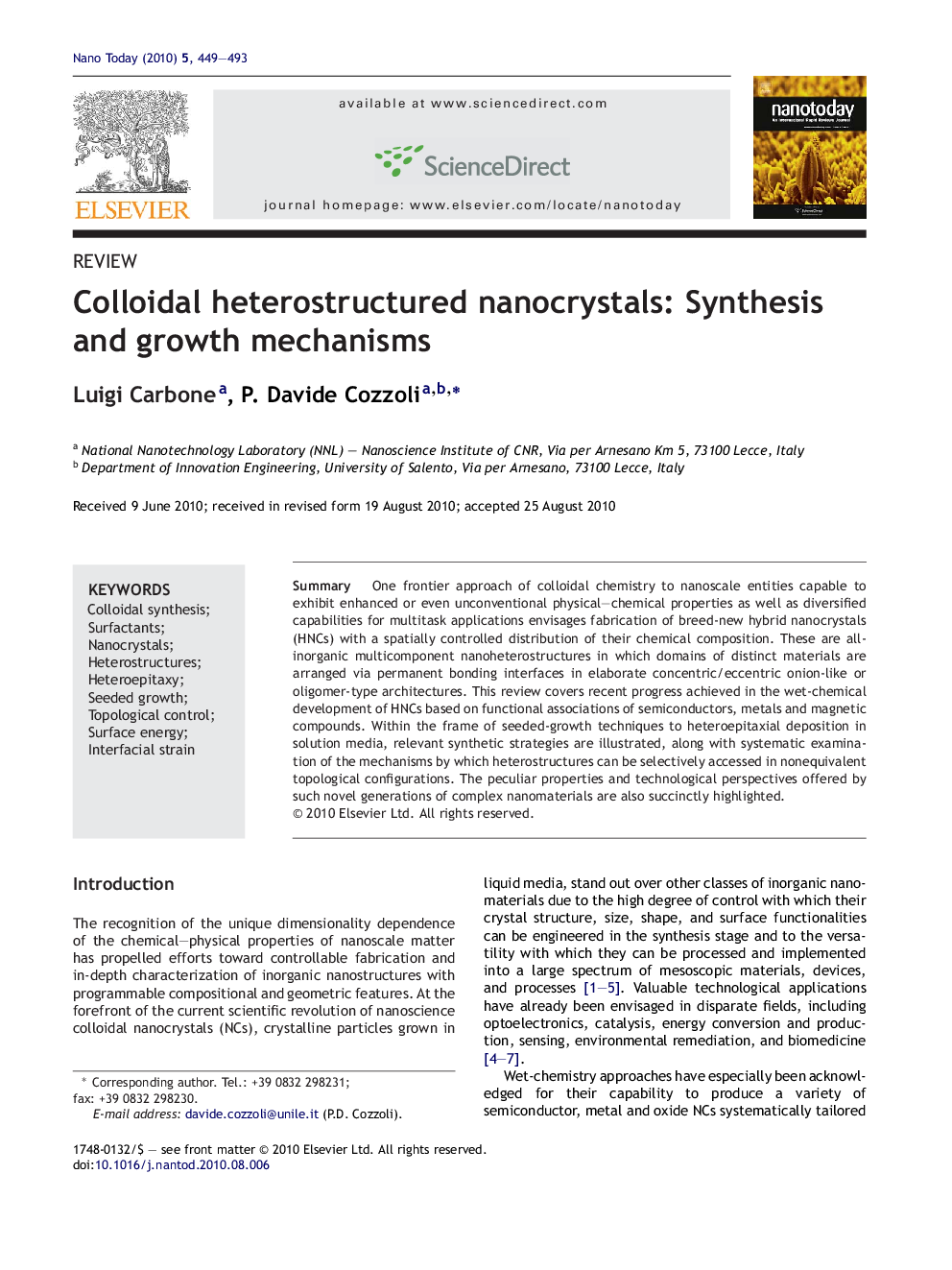| Article ID | Journal | Published Year | Pages | File Type |
|---|---|---|---|---|
| 32283 | Nano Today | 2010 | 45 Pages |
SummaryOne frontier approach of colloidal chemistry to nanoscale entities capable to exhibit enhanced or even unconventional physical–chemical properties as well as diversified capabilities for multitask applications envisages fabrication of breed-new hybrid nanocrystals (HNCs) with a spatially controlled distribution of their chemical composition. These are all-inorganic multicomponent nanoheterostructures in which domains of distinct materials are arranged via permanent bonding interfaces in elaborate concentric/eccentric onion-like or oligomer-type architectures. This review covers recent progress achieved in the wet-chemical development of HNCs based on functional associations of semiconductors, metals and magnetic compounds. Within the frame of seeded-growth techniques to heteroepitaxial deposition in solution media, relevant synthetic strategies are illustrated, along with systematic examination of the mechanisms by which heterostructures can be selectively accessed in nonequivalent topological configurations. The peculiar properties and technological perspectives offered by such novel generations of complex nanomaterials are also succinctly highlighted.
Graphical abstractFigure optionsDownload full-size imageDownload high-quality image (63 K)Download as PowerPoint slideResearch highlights▶ Heterostructured nanocrystals (HNCs) incorporate multiple inorganic material domains interconnected via bonding interfaces. ▶ HNCs can be synthesized in core/shell or hetero-oligomer architectures by surfactant-assisted seeded-growth techniques. ▶ HNC topology depends on the surface-interface energy balance and the particular formation mechanism concerned. ▶ HNCs can offer multiple surface platforms, diversified or even unconventional chemical–physical properties for advanced applications.
